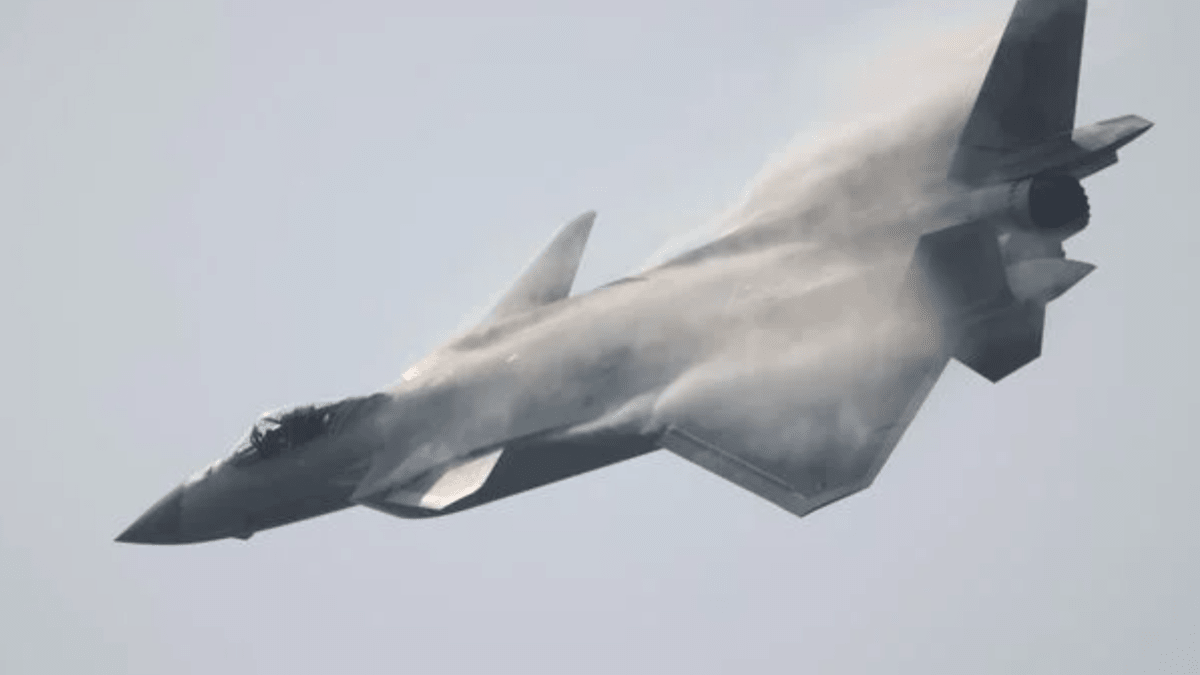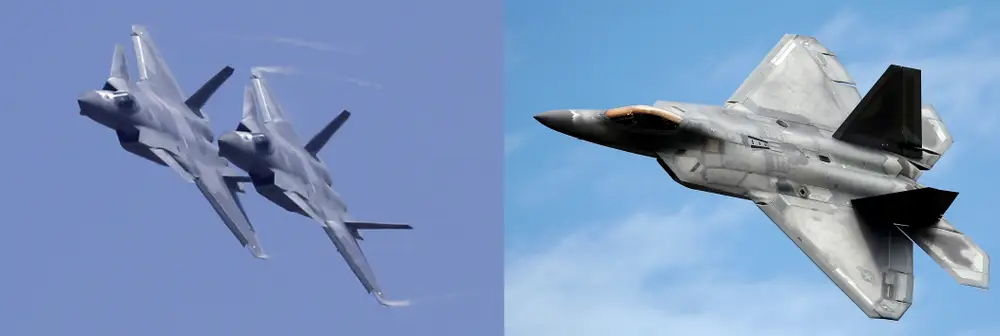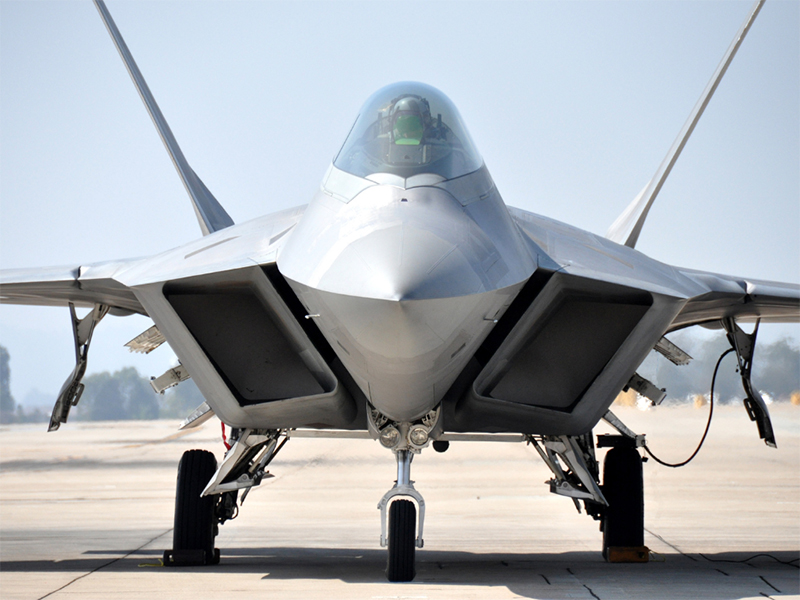An esteemed military expert recently spoke about the difficulties in accurately comparing the capabilities of different planes, stating that it’s nearly impossible to do so without witnessing them in actual combat.
According to the expert, while on paper one plane may appear superior to another, it’s only in real-life scenarios that their true abilities can be put to the test. Factors such as pilot skill, weather conditions, and tactics employed can all greatly impact a plane’s performance, making it difficult to make accurate comparisons based solely on technical specifications.
As the expert concluded, it’s essential to keep in mind that a plane’s true value can only be determined through actual combat experience. Until then, any comparisons made are simply theoretical and may not accurately reflect real-world capabilities.
According to experts interviewed by Fox News Digital, China’s achievement of a fifth-generation fighter jet was largely made possible through the copying of U.S. military technology. If more isn’t done to protect sensitive weapons information, China could continue to challenge the American military in terms of technological advancements.
“They have profited greatly from their
thievery over the years.”
Former Acting Under Secretary of Defense for Policy James Anderson emphasized the role of espionage in China’s development of the J-20, stating that “they have profited greatly from their thievery over the years.” Despite this, Anderson acknowledged that it’s difficult to compare the J-20 to the U.S. F-22 Raptor fighter without actual combat experience.
China initiated development of the J-20 in 2008 as part of a larger plan to create a fighter that could compete with American models. The J-20 completed its first flight in 2011 and was introduced for service in 2017.
As China continues to make strides in military technology, it’s increasingly important for the U.S. to prioritize safeguarding its weapons information. Failure to do so could result in continued challenges from China and other countries seeking to replicate U.S. military capabilities.
“Some of its technology, it turns out, may well have come from the U.S. itself.”
Since 2015, reports have been emerging about the similarities between China’s fighter jets and those of the U.S. military. An Associated Press report from that time suggested that “some of its technology, it turns out, may well have come from the U.S. itself.”
Today, China has developed a fifth-generation stealth fighter that is comparable to the U.S. F-22, narrowing the once substantial technological gap between the two militaries. This has heightened concerns about the country’s continued intellectual property theft, and the need for the U.S. to bolster safeguards for sensitive weapons information.
The increasingly tense relationship between the U.S. and China, and the possibility of a U.S. military response to a Chinese invasion of Taiwan, has brought renewed attention to the disparity in military technology between the two nations. As China continues to advance its capabilities, it’s essential for the U.S. to remain vigilant in protecting its intellectual property and maintaining its technological edge in military affairs.
The U.S. faces a significant challenge in dealing with China’s “philosophical difference” and its willingness to prioritize what is “best for China” above all else.
According to James Hess, a professor at the School of Security and Global Studies at American Public University System (APUS), the U.S. faces a significant challenge in dealing with China’s “philosophical difference” and its willingness to prioritize what is “best for China” above all else.
Hess emphasized that there is a cultural aspect to this, noting that “you can even look in the history of China with an overall culture of things that have provided a betterment for society versus a worry about it.” He believes that this perspective may contribute to a lack of enforcement when it comes to intellectual property theft.
Understanding these cultural differences is crucial for the U.S. as it seeks to address issues such as intellectual property theft and other areas of concern. By recognizing China’s motivations and perspectives, the U.S. may be better equipped to find mutually beneficial solutions to ongoing issues between the two countries.

Former Acting Under Secretary of Defense for Policy James Anderson highlighted the challenges the U.S. faces in dealing with China’s perception of intellectual property theft. “There’s an author who said, ‘To steal a book is an elegant offense,’ so you have that kind of mentality, that knowledge is not necessarily looked at as theft of knowledge… is not looked at as a capital offense by any means,” Anderson explained. “It’s looked at as kind of a good thing, that this is a positive thing you’re doing.”
Anderson also noted that China employs a variety of espionage techniques, including the use of spies, honey traps, and bribery to recruit U.S. contractors, university academics, and government personnel. In addition, the country also uses more advanced methods, such as cyberactivity, to obtain key data on military systems.
These tactics have allowed China to make significant advancements in military technology, including the development of a fifth-generation stealth fighter that rivals the U.S. F-22. As tensions between the two countries continue to increase, it’s essential for the U.S. to prioritize safeguarding its intellectual property and finding effective ways to address ongoing issues with China.
Former Acting Under Secretary of Defense for Policy James Anderson has expressed concern over China’s success in obtaining sensitive information on U.S. military technology, specifically pointing to the Joint Strike Fighter as a prime example.

Anderson noted that China had spent “well over a decade” targeting the Joint Strike Fighter, and had ultimately exploited this information in the design and construction of their own J-20 fighter. This has allowed China to save time and money on their research and development budget, with the unintended consequence of effectively having the U.S. subsidize a portion of their military advancements.
Moreover, Anderson emphasized that the theft of sensitive information puts American military personnel at greater risk on the battlefield. As China continues to make significant strides in military technology, it’s essential for the U.S. to prioritize protecting its intellectual property and finding effective solutions to ongoing issues with China.
Matt McInnis, senior fellow for the Institute for the Study of War’s China program, underscored China’s intense focus on obtaining jet engine technology, particularly in light of past struggles to keep pace with the U.S. and Western nations in terms of military advancements.
McInnis noted that China’s efforts to produce their own jet engine technology had long been a source of skepticism, stating that “that’s always the joke…will the Chinese ever be able to produce their own jet engine?” However, China has gradually become more independent in this area, enabling the country to create jet engines for their more advanced aircraft.
As China continues to advance its military capabilities, it’s important for the U.S. to remain vigilant in protecting its intellectual property and investing in research and development to maintain its technological edge. The ongoing competition between the two countries highlights the need for continued innovation and adaptation in the field of military technology.
Matt McInnis, senior fellow for the Institute for the Study of War’s China program, has highlighted the continued focus of Chinese espionage efforts
Matt McInnis, senior fellow for the Institute for the Study of War’s China program, has highlighted the continued focus of Chinese espionage efforts on obtaining knowledge of sophisticated jet engines from the West.
McInnis emphasized that this remains a significant driving force behind China’s espionage efforts, pointing to the recent case of Yanjun Xu. In 2022, Xu was convicted of attempting to steal trade secrets from multiple U.S. aviation and aerospace companies, including the theft of proprietary airplane engine fan technology.
The case of Yanjun Xu underscores the ongoing threat of Chinese espionage to American intellectual property and national security. As China continues to make strides in military technology, it’s essential for the U.S. to prioritize protecting its intellectual property and developing effective strategies for countering espionage efforts.
U.S. prosecutors claimed that Yanjun Xu had begun recruiting experts from companies like GE Aviation in Cincinnati as early as 2013. However, his lawyers have maintained that he was not a spy and never asked for trade secrets.
Despite this case, Matt McInnis, senior fellow for the Institute for the Study of War’s China program, noted that China remains a significant threat to U.S. national security through its continued efforts to acquire Western technical knowledge through espionage and other means.

McInnis pointed to recent efforts by China, including the recruitment of former British pilots to train the People’s Liberation Army’s air force pilots. This is yet another example of how China is attempting to acquire Western technical knowledge and improve its military capabilities.
As China continues to advance its military technology, it’s essential for the U.S. to remain vigilant in protecting its intellectual property and finding effective ways to counter Chinese espionage efforts. The ongoing competition between the two countries highlights the need for continued innovation and adaptation in the field of military technology.
According to military experts, China’s acquisition of technology from Russia, the U.S., and European manufacturers has enabled them to significantly narrow the gap in jet engine technology between the U.S. and China.
As one expert put it, “The Chinese baseline of what the Russians have given them and what they were able to steal from us and from European manufacturers has brought them up to maybe only a 10- or 15-year gap between us and Chinese jet engine technology, whereas before they were much more like 20 to 30 years behind us.”
This progress has heightened concerns about China’s continued espionage efforts and its ability to use stolen information to advance its military capabilities. As tensions between the U.S. and China continue to escalate, it’s increasingly important for the U.S. to prioritize protecting its intellectual property and investing in research and development to maintain its technological edge.



